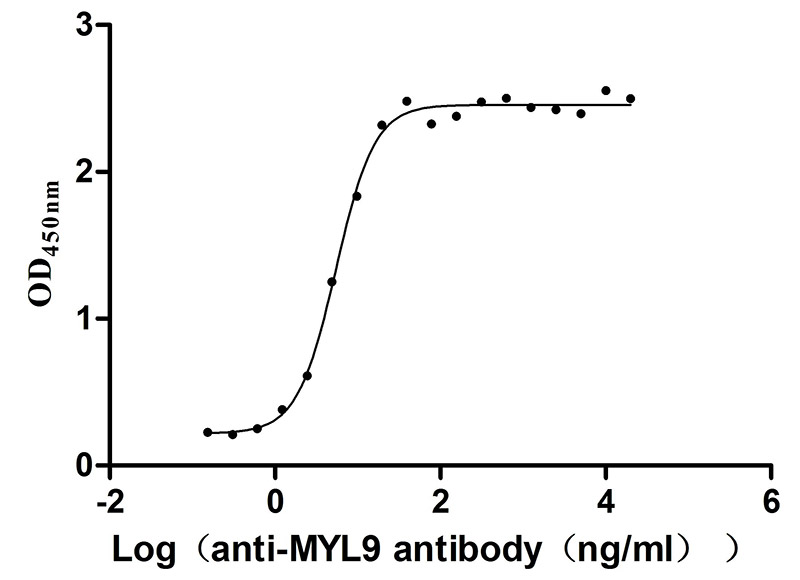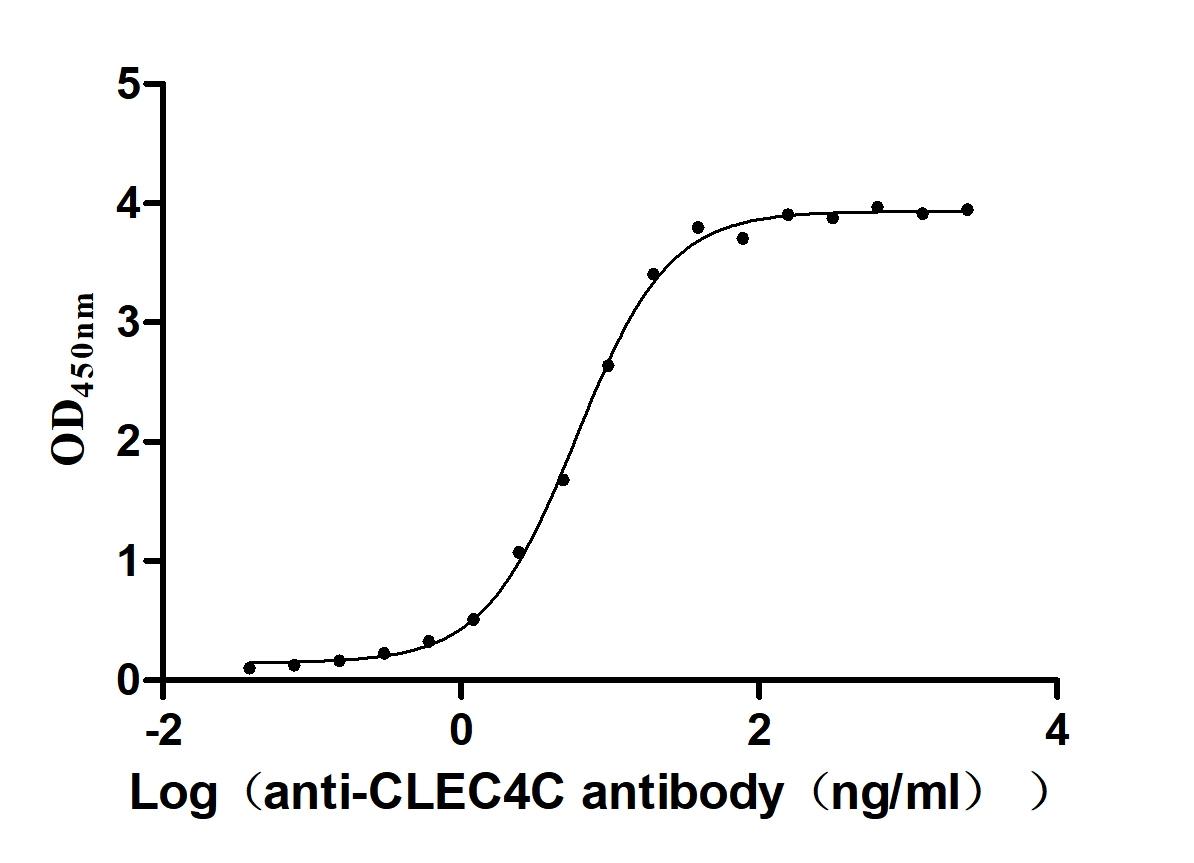Recombinant Mouse Transient receptor potential cation channel subfamily M member 8 (Trpm8), partial
-
中文名称:小鼠Trpm8重组蛋白
-
货号:CSB-YP851273MO
-
规格:
-
来源:Yeast
-
其他:
-
中文名称:小鼠Trpm8重组蛋白
-
货号:CSB-EP851273MO
-
规格:
-
来源:E.coli
-
其他:
-
中文名称:小鼠Trpm8重组蛋白
-
货号:CSB-EP851273MO-B
-
规格:
-
来源:E.coli
-
共轭:Avi-tag Biotinylated
E. coli biotin ligase (BirA) is highly specific in covalently attaching biotin to the 15 amino acid AviTag peptide. This recombinant protein was biotinylated in vivo by AviTag-BirA technology, which method is BriA catalyzes amide linkage between the biotin and the specific lysine of the AviTag.
-
其他:
-
中文名称:小鼠Trpm8重组蛋白
-
货号:CSB-BP851273MO
-
规格:
-
来源:Baculovirus
-
其他:
-
中文名称:小鼠Trpm8重组蛋白
-
货号:CSB-MP851273MO
-
规格:
-
来源:Mammalian cell
-
其他:
产品详情
-
纯度:>85% (SDS-PAGE)
-
基因名:
-
Uniprot No.:
-
别名:Trpm8; Ltrpc6; Trpp8; Transient receptor potential cation channel subfamily M member 8; Long transient receptor potential channel 6; LTrpC-6; LTrpC6; Transient receptor potential p8; Trp-p8
-
种属:Mus musculus (Mouse)
-
蛋白长度:Partial
-
蛋白标签:Tag type will be determined during the manufacturing process.
The tag type will be determined during production process. If you have specified tag type, please tell us and we will develop the specified tag preferentially. -
产品提供形式:Lyophilized powder
Note: We will preferentially ship the format that we have in stock, however, if you have any special requirement for the format, please remark your requirement when placing the order, we will prepare according to your demand. -
复溶:We recommend that this vial be briefly centrifuged prior to opening to bring the contents to the bottom. Please reconstitute protein in deionized sterile water to a concentration of 0.1-1.0 mg/mL.We recommend to add 5-50% of glycerol (final concentration) and aliquot for long-term storage at -20℃/-80℃. Our default final concentration of glycerol is 50%. Customers could use it as reference.
-
储存条件:Store at -20°C/-80°C upon receipt, aliquoting is necessary for mutiple use. Avoid repeated freeze-thaw cycles.
-
保质期:The shelf life is related to many factors, storage state, buffer ingredients, storage temperature and the stability of the protein itself.
Generally, the shelf life of liquid form is 6 months at -20°C/-80°C. The shelf life of lyophilized form is 12 months at -20°C/-80°C. -
货期:Delivery time may differ from different purchasing way or location, please kindly consult your local distributors for specific delivery time.Note: All of our proteins are default shipped with normal blue ice packs, if you request to ship with dry ice, please communicate with us in advance and extra fees will be charged.
-
注意事项:Repeated freezing and thawing is not recommended. Store working aliquots at 4°C for up to one week.
-
Datasheet :Please contact us to get it.
靶点详情
-
功能:Receptor-activated non-selective cation channel involved in detection of sensations such as coolness, by being activated by cold temperature below 25 degrees Celsius. Activated by icilin, eucalyptol, menthol, cold and modulation of intracellular pH. Involved in menthol sensation. Permeable for monovalent cations sodium, potassium, and cesium and divalent cation calcium. Temperature sensing is tightly linked to voltage-dependent gating. Activated upon depolarization, changes in temperature resulting in graded shifts of its voltage-dependent activation curves. The chemical agonists menthol functions as a gating modifier, shifting activation curves towards physiological membrane potentials. Temperature sensitivity arises from a tenfold difference in the activation energies associated with voltage-dependent opening and closing.
-
基因功能参考文献:
- Cold air could induce inflammatory responses through the TRPM8-mediated PKC/NF-kappaB signal pathway in primary airway epithelial cells of asthmatic mice. PMID: 29629494
- Data suggest that transient receptor potential melastatin 8 (TRPM8) may represent a novel therapeutic target for combating obstructive airway diseases, such as asthma. PMID: 29635321
- These results suggest that TRPM8 expressed in tissues apart from cutaneous sensory nerves are involved in autonomic thermoregulation response. PMID: 28412531
- Since disruption of the clock machinery has been associated with many metabolic disorders, the pharmacological modulation of TRPM8 channel may become a promising therapeutic target to counterbalance weight gain, through increased thermogenesis, energy expenditure, and clock gene activation. PMID: 28943398
- These results suggest that TRPV4, TRPV3 and TRPM8 proteins, but not their ion channel activities are necessary for the induction of CIPs at 32 degrees C. Identification of proteins that differentially interact with these TRP channels at 37 degrees C and 32 degrees C would help elucidate the underlying mechanisms of CIP induction by hypothermia. PMID: 29175331
- Praziquantel is a relatively potent and selective partial agonist of the mammalian and avian cold and menthol receptor TRPM8. PMID: 29054683
- These results taken together with other reports suggest that TRPM8 containing sensory neurons are environmental cooling detectors that may be nociceptive or non-nociceptive depending on the sensitivity of individual fibers to different combinations of stimulus modalities. PMID: 28381446
- TRPM8 activation by dietary menthol improves energy metabolism and exercise endurance, which are likely driven by TRPM8-mediated Ca2+-dependent upregulation of PGC1alpha and its target genes involved in the mitochondrial function. PMID: 29054764
- TRPM8 in macrophages determines pro- or anti-inflammatory actions by regulating tumor necrosis factor-alpha and interleukin-10 production. These findings suggest novel TRPM8-based options for immunomodulatory intervention. PMID: 26982596
- Here the authors show that AITC (allyl isothiocyanate; mustard oil) and menthol represent two distinct types of ligands at the mammalian cold sensor TRPM8. PMID: 27449282
- The results of this study show that chronic morphine upregulates TRPM8 channels, which is in contrast with the previous finding that acute morphine triggers TRPM8 internalization. PMID: 27845197
- data suggest that sex differences in the functioning of Ih and Ik in TRPM8 expressing primary afferent neurons leads to differences in cool temperature sensitivity PMID: 28472061
- This study suggests that the TRPM8 sensor is a key determinant of germ cell fate under hypothermic stimulation. PMID: 27317670
- We identify PLCdelta4 as a PLC isoform important in the regulation of TRPM8 both at the cellular level and in vivo PMID: 27062607
- This paper unveils the critical role of the brake potassium current IKD in damage-triggered cold allodynia. PMID: 28179555
- Reduced functional expression of TRPM8 in sensory neurons (due to VAMP7 knockout) is associated with deficits in cold avoidance and icilin-induced cold hypersensitivity. PMID: 26843440
- Report essential role of skin TRPM8 in a model of acute cold-induced urinary urgency. PMID: 25843641
- This study findings suggest the existence of VGLUT2 (but not VGLUT1)-mediated glutamate signaling in TRPM8+ neurons possibly underlying the cold-induced acute pain and hypersensitivity to cold following pulpal inflammation. PMID: 26166724
- Data suggest that blockage of transient receptor potential (TRP) channels TRPA1, TRPV4 and possibly TRPM8 may represent a therapeutic option for patients with colonic discomfort and pain. PMID: 26207981
- peripheral osmosensor responsible for the regulation of normal eye-blinking PMID: 25998021
- TRPM8 signaling in mucosal sensory neurons is indispensable for the regulation of innate inflammatory responses via the neuropeptide CGRP. PMID: 25269705
- TRPM8-expressing dural afferent fibers undergo cell- and target tissue-specific axonal pruning during postnatal development. PMID: 26111800
- our findings suggest that temperature response thresholds in mice are dynamic. PLC-mediated hydrolysis of phosphoinositol 4,5-bisphosphate modulates TRPM8 activity and thereby regulates the response thresholds to cold stimuli. PMID: 25109670
- ZBTB20 regulates nociception and pain sensation by modulating TRPV1, TRPA1 and TRPM8 expression in nociceptive sensory neurons. PMID: 25369838
- Increased expression of TRPM8 may contribute to the visceral hyperalgesia of experimental colitis. PMID: 24832648
- Study shows that oxidative stress affects urothelial function involving a TRPM8-mediated mechanism and these effects may have important implications for aging. PMID: 24593692
- The results of this study indicated that the enhanced behavioral responses to cold stimuli in CGRPalpha sensory neuron-ablated mice are dependent on functional TRPM8. PMID: 25406633
- Identified two regions within the initial N terminus of TRPM8 that contribute differently to channel activity and proper folding and assembly. Deletion or substitution of the first 40 residues yielded channels with augmented responses to cold and menthol. PMID: 24917670
- These findings suggest that TRPM8-mediated cold is conveyed via a specific subset of C and Adelta afferent neurons and is processed in a unique manner and differently in the trigemical sensory nucleus and dorsal horn. PMID: 24710558
- Data indicate that transient receptor potential melastatin subtype 8 (TRPM8) activation by menthol attenuated vasoconstriction via RhoA/Rho kinase pathway inhibition in wild-type mice, but the effect was absent in TRPM8(-/-) mice. PMID: 24637663
- TRPM8 is the principal mediator of menthol-induced analgesia of acute and inflammatory pain. PMID: 23820004
- Pirt regulates the function of TRPM8 and its role in detecting cold. PMID: 23863968
- External cooling-induced shivering and tachycardia are not suppressed by TRPM8 inhibition. PMID: 24005250
- We found that artemin, the specific GFRalpha3 ligand that evokes heat hyperalgesia, robustly sensitized cold responses in a TRPM8-dependent manner in mice. PMID: 23884957
- These results demonstrate that TRPM8 is a novel regulator of serum insulin and support the role of sensory innervation in metabolic homeostasis. PMID: 23651844
- Excitation and modulation of TRPA1, TRPV1, and TRPM8 channel-expressing sensory neurons by the pruritogen chloroquine. PMID: 23508958
- These data document an anti-inflammatory role for TRPM8 activation. PMID: 23596210
- This study demonistrated that Ablation of TRPM8 neurons caused major temperature detection deficits in the warm temperature range. PMID: 23536068
- TRPM8 neurons are required for the breadth of behavioral responses evoked by cold temperatures PMID: 23407943
- TRPV1 and TRPA1 but not TRPM8 channels likely contribute to the excitation of dural afferent neurons and the subsequent activation of the headache circuit. PMID: 22971321
- TRPM8 channels play a role in body temperature regulation. PMID: 22571355
- These studies indicated that low concentrations of menthol can increase lacrimation via TRPM8 channels without evoking nocifensive behaviors. PMID: 22952122
- The TRPM8 ion channel comprises direct Gq protein-activating capacity. PMID: 22460725
- results indicate that post-translational modification of TRPM8 is an important mechanism modulating cold thermoreceptor function PMID: 22493431
- Activation of the cold-sensing TRPM8 channel triggers UCP1-dependent thermogenesis and prevents obesity. PMID: 22241835
- TRPM8 is molecule of thermostat of skin temperature against cooling. PMID: 21407809
- The localization of TRPM8 protein in mouse sperm was confirmed by immunocytochemistry and Western blots. PMID: 21413020
- Ocular surface wetness is regulated by TRPM8-dependent cold thermoreceptors of the cornea. PMID: 21076394
- TRPM8-dependent functional cold circuits are not established until at least the second week of postnatal development. PMID: 20580783
- noxious cold signaling is exclusive to TRPM8, mediating neural and behavioral responses to cold and cold-mimetics PMID: 20542379
显示更多
收起更多
-
亚细胞定位:Cell membrane; Multi-pass membrane protein. Membrane raft. Note=Localizes to membrane rafts but is also located in the cell membrane outside of these regions where channel response to cold is enhanced compared to membrane rafts.
-
蛋白家族:Transient receptor (TC 1.A.4) family, LTrpC subfamily, TRPM8 sub-subfamily
-
组织特异性:Expressed in dorsal root and trigeminal ganglia. Specifically expressed in a subset of pain- and temperature-sensing neurons. Not expressed in heavily myelinated neurons. Not expressed in neurons expressing TRPA1 or TRPV1.
-
数据库链接:
Most popular with customers
-
Recombinant Human Programmed cell death protein 1 (PDCD1), partial (Active)
Express system: Mammalian cell
Species: Homo sapiens (Human)
-
Recombinant Human Tumor necrosis factor receptor superfamily member 8 (TNFRSF8), partial (Active)
Express system: Mammalian cell
Species: Homo sapiens (Human)
-
Recombinant Mouse Semaphorin-4D (Sema4d), partial (Active)
Express system: Mammalian cell
Species: Mus musculus (Mouse)
-
Recombinant Human Cytokine receptor common subunit beta (CSF2RB), partial (Active)
Express system: Mammalian cell
Species: Homo sapiens (Human)
-
Recombinant Human IGF-like family receptor 1 (IGFLR1), partial (Active)
Express system: Mammalian cell
Species: Homo sapiens (Human)
-
Recombinant Mouse Claudin-18.2 (Cldn18.2)-VLPs (Active)
Express system: Mammalian cell
Species: Mus musculus (Mouse)
-
Recombinant Human Myosin regulatory light polypeptide 9 (MYL9) (Active)
Express system: Yeast
Species: Homo sapiens (Human)
-
Recombinant Macaca fascicularis C-type lectin domain family 4 member C(CLEC4C), partial (Active)
Express system: Mammalian cell
Species: Macaca fascicularis (Crab-eating macaque) (Cynomolgus monkey)


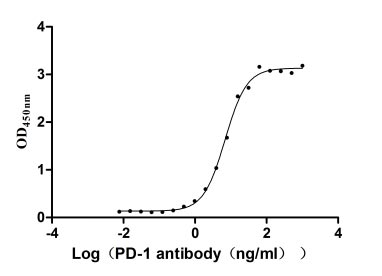
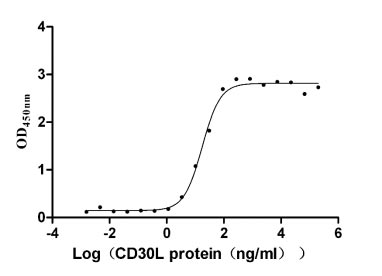
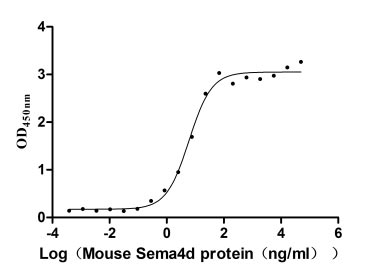
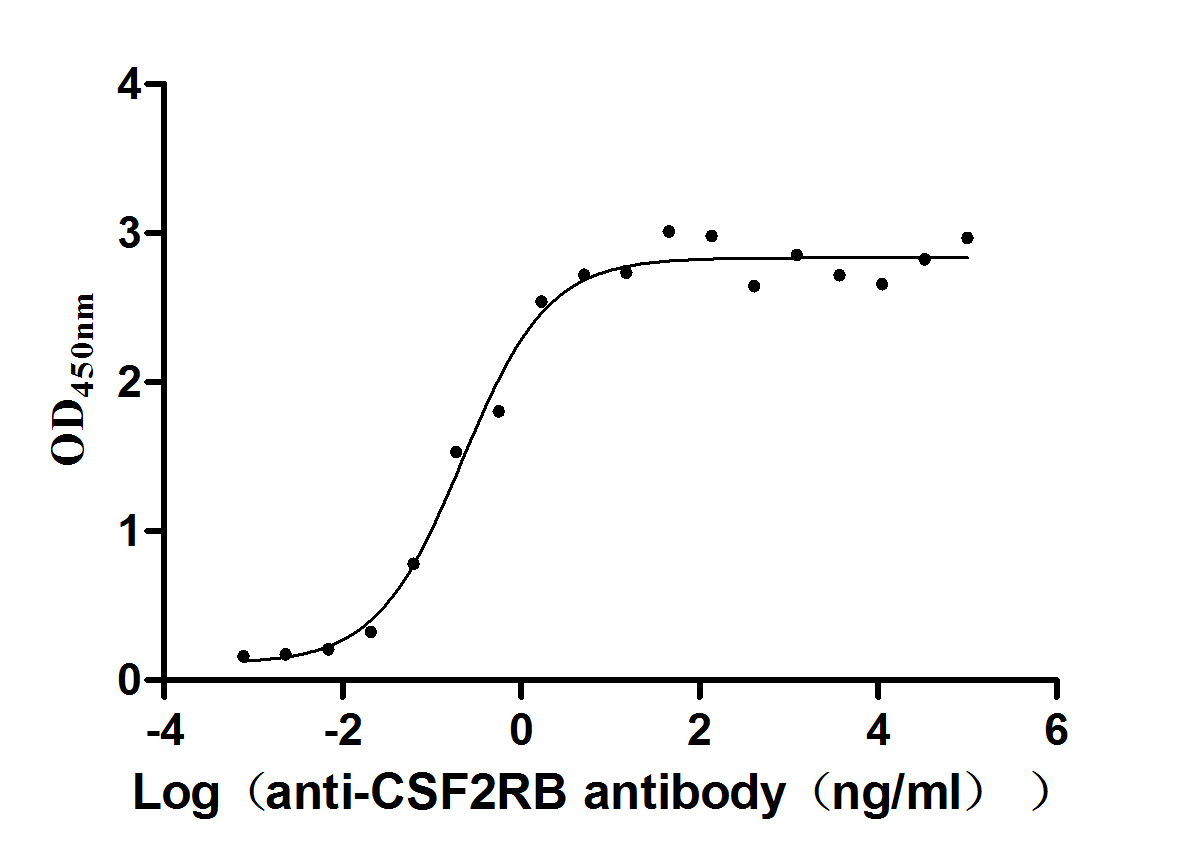
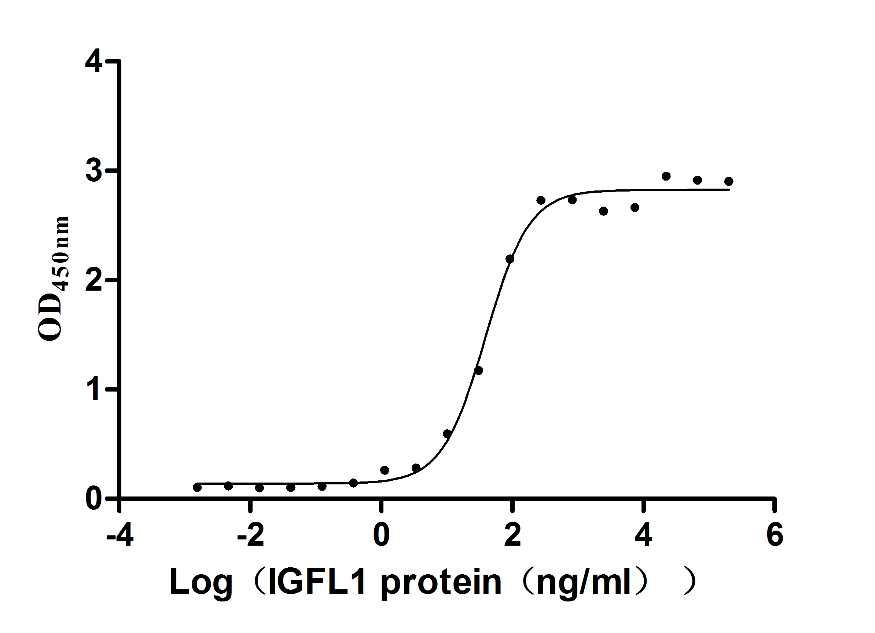
-AC1.jpg)
